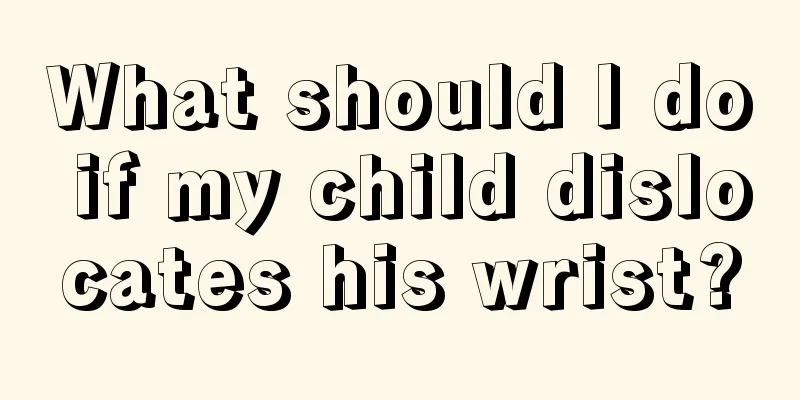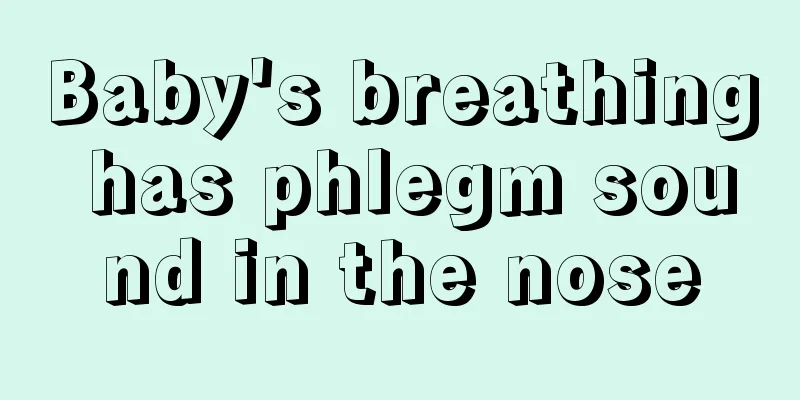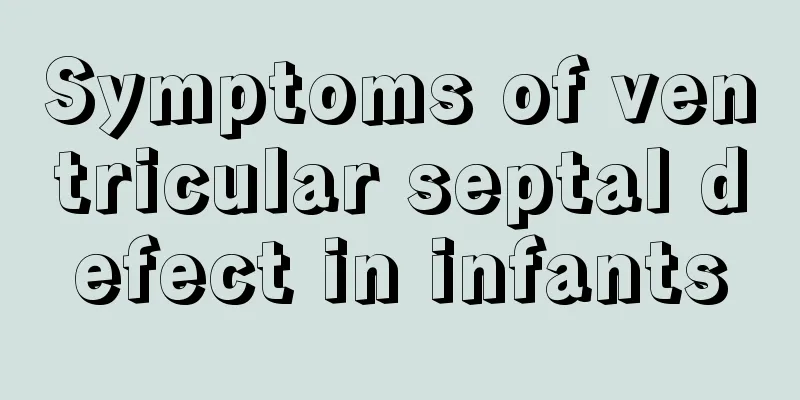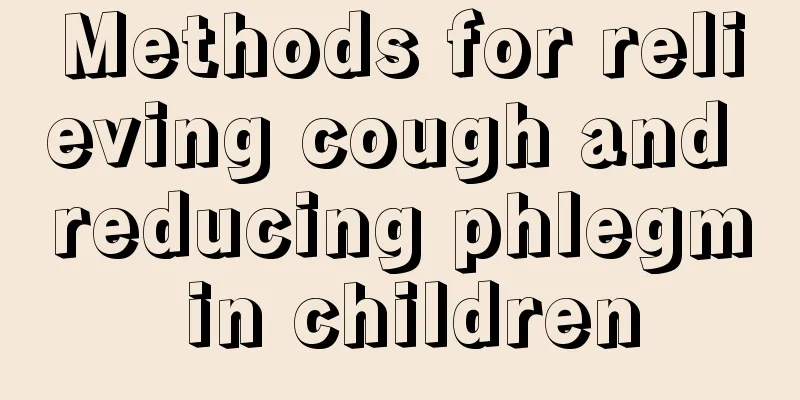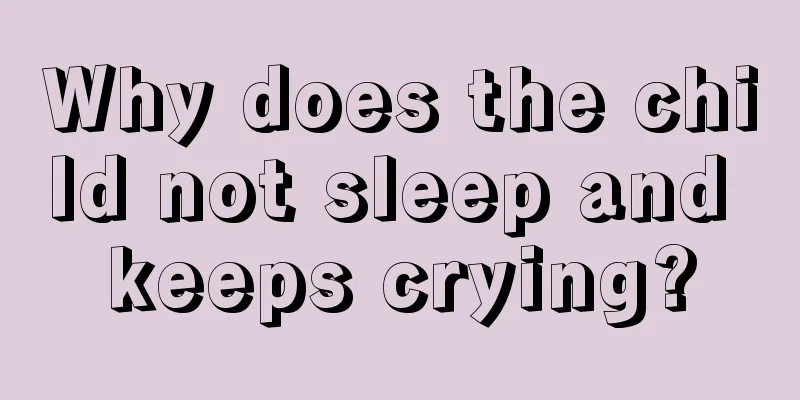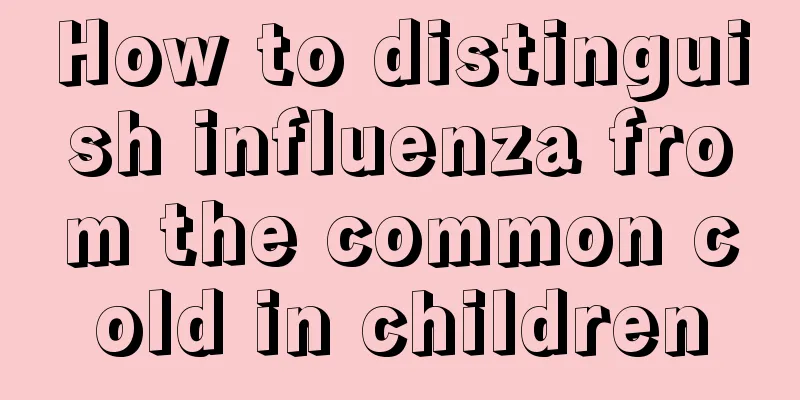2-year-old baby has inflammation and fever of 39 degrees
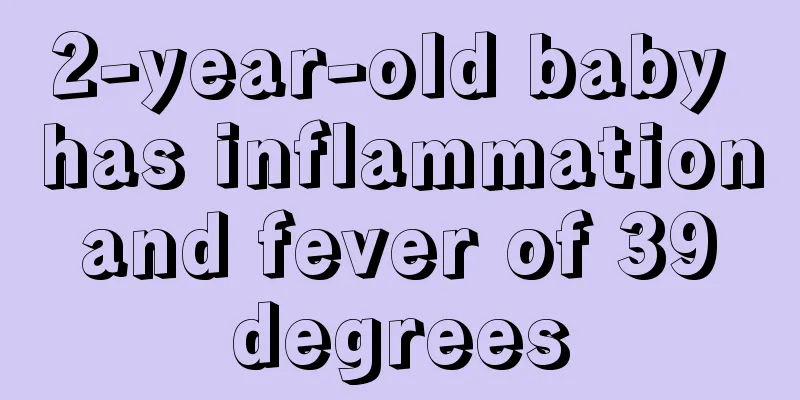
|
Children's health is what parents are most concerned about. Young children in particular often suffer from various diseases due to their weak immunity. Especially during the change of seasons, when viruses and bacteria are prevalent, diseases are prone to occur. Colds and fevers are common problems. If there is a high fever and inflammation, timely treatment is needed. Two-year-old children are too young and often have problems with low resistance. So what should we do if a 2-year-old baby has inflammation and a fever of 39 degrees? What to do if you have a high fever And the consequences will be irreversible, so when a high fever occurs, timely treatment should be sought and serious illness should not be delayed. 1. If the child is young, you cannot use medicine casually on a three-month-old child as this will have serious side effects on the child, so physical methods can be used to reduce the temperature. If the child is a little older, some antipyretic drugs can be used. If antipyretic drugs are ineffective or the temperature rises again shortly after the drugs are used to reduce fever, physical cooling methods need to be used. 2. Warm water bath: Dip a towel in warm water and scrub the neck, thigh roots, and armpits repeatedly for 5 to 10 minutes. You can also use a cooling patch to cool down. This method can help dissipate heat. If the child has a high fever above 38.5°, medication is needed to reduce the fever. If physical fever reduction is not obvious, medication is also needed. 3. Pay more attention to ventilation and heat dissipation. Clothes should not be too tight. Wear loose clothes to help reduce fever. In summer, you can use air conditioning to help cool down, but the indoor temperature should be controlled at around 27 degrees. Also pay attention to opening windows for ventilation regularly, so that the air in the room can form convection. When a child has a fever, he or she should also pay attention to replenishing water. He or she can drink warm water or eat some liquid food to ensure normal water in the body. How severe is a child's fever of 39 degrees? Children are inherently weaker and have lower resistance, so when they catch a cold, they are prone to fever and the fever may be high and difficult to reduce. The parents are very worried. What are the dangers of a child reaching 39 degrees? 1. If the child has a fever above 39°, parents need to take the child to see a doctor immediately and the fever needs to be reduced. 39° is a high fever. At this time, if the child's complexion is normal or flushed, he or she can be cared for at home. If the complexion appears purple, blue, yellow, or dull, it means that the condition is more serious and you need to see a doctor in time. 2. When a child has a fever, parents should not blindly reduce the fever. They should go to the hospital to find out the cause and then give appropriate treatment. Fever is a normal defensive reaction. Fever is a symptom of colds, leukemia and other diseases. 3. A high fever of 39° is serious. Most people would think that if the fever does not go away it will damage the brain. In fact, high temperature burns the brain because the temperature is high and lasts for a long time. When the body temperature reaches 42° and lasts for a long time, the protein in the human body will denature, causing direct damage to the brain. 4. When your child has a fever, be sure to observe the child's complexion and mental state. If any problems occur, go to the hospital for treatment in time. If the high fever persists and the child has convulsions or coma, timely treatment is required. What to do if tonsillitis causes fever Children have poor resistance and are easily invaded by some viruses and bacteria, which can cause tonsillitis, cough and fever. Once the baby has a fever, parents will be very worried. How to treat fever caused by tonsillitis? 1. When tonsils are inflamed, antiviral drugs and antibiotics can be used. When the body temperature exceeds 38.5°, physical measures or antipyretic drugs can be used to reduce the fever. A body temperature of 37.5° to 38° is low fever, 38° to 39° is moderate fever, and above 39° is high fever. It is more beneficial for the baby's growth and development if the baby has a low fever or a moderate fever. 2. Fever is a response to viral or bacterial invasion. This reaction is beneficial to the elimination of viruses and bacteria and is helpful to the baby's physical development. If the fever is above 39°C, you must take medicine to reduce it. If the high fever lasts too long, many functions in the body will be easily disrupted, and excessive consumption of oxygen and nutrients will easily put a burden on the heart and blood vessels. 3. If the brain is overexcited, convulsions may occur or excessive inhibition may cause drowsiness. At the same time, there may be weakened resistance, digestive disorders, and pneumonia. How to prevent tonsillitis When a baby has tonsillitis, he is prone to fever, and the fever can easily lead to a high fever, which has a great impact on the child's body. Prevent tonsillitis and avoid fever in baby. How to prevent tonsillitis? 1. Open windows frequently for ventilation, which can keep the indoor air fresh and is of great help to the child's health. Do not smoke indoors, which can reduce irritation to the child's throat. 2. Help children develop good personal hygiene habits, wash hands before meals and after defecation, and trim nails frequently to keep fingers clean. Taking children to do more outdoor sports and exercise can help improve their resistance and is very beneficial to their body. 3. Children should dress appropriately at ordinary times. Not too little or too much, as both are bad for the baby's health and make them prone to illness. Children should also be ensured to have good sleep and a nutritious diet, which will be helpful to their health. 4. If there is a flu outbreak season, children should be encouraged to go to fewer public places. This can reduce the risk of infection with the flu virus and the risk of tonsillitis in children. This is also a better prevention method. Tonsillitis care When children have tonsillitis, it has a great impact on them, and they will also suffer from the disease. Because tonsillitis causes pain, special care is needed. What kind of care is there in daily life? 1. When children have tonsillitis, they need proper rest, smooth bowel movements, strengthened nutrition, and eat more light and easily digestible foods. Sprays can be used locally for good treatment effects, and lozenges and mouthwash can also be used. 2. When a child has a fever, he or she needs to drink more water to prevent dehydration. Drinking more water can also help reduce fever and prevent further development of inflammation. 3. You can let your child drink more cool foods. When your child has tonsillitis, you should reduce the amount of hot foods he or she eats. This will be very uncomfortable because hot foods will irritate the throat and aggravate the condition. Therefore, parents can prepare some cool drinks for their children to relieve pain. 4. You can use a humidifier indoors to ensure that the humidity in the air increases and reduce irritants in the air. However, the humidifier cannot be used all day long and needs to be cleaned regularly to prevent mold from forming. Fever can cause many diseases, so you must pay attention when you have a high fever, and you must check it in time and receive symptomatic treatment to help recover from the disease. |
<<: Should children be circumcised if they have inflammation?
>>: What causes cross-eyes in children?
Recommend
How to deal with children's colds in summer
Children are a group that is more prone to illnes...
What should children eat to nourish their eyes?
Eyes are the windows to the soul. Having a pair o...
How to deal with a child with a fever of 38.5 degrees
Whenever a child at home feels a little unwell, i...
Types of anesthetic drugs for children
Many of our children have had problems. Spinal ca...
Why does the baby not drink milk?
When children are young, they need to supplement ...
What to do if your two-year-old baby cries while sleeping at night
My child is just two years old. He didn't cry...
What is the cause of premature graying of hair?
Now my friends around me have always been trouble...
Can children eat mulberries?
Mulberry is a dark-colored food. Although it is s...
What are the symptoms of mycoplasma infection in children
Mycoplasma is extremely harmful to human health, ...
White spots on the scalp of a child
If a child develops white spots on the scalp when...
Will bumping heads affect children's intelligence?
Children will inevitably encounter some bumps and...
What causes ankle pain in children?
It is actually very common for children to experi...
What to do if your three-month-old baby has sticky stools
My baby, who is just three months old, has sympto...
What are the treatments for children with cerebral palsy?
Some children's diseases are congenital, whil...
What are the dangers of thrombocytosis in children?
When children are young, they always have some sy...
